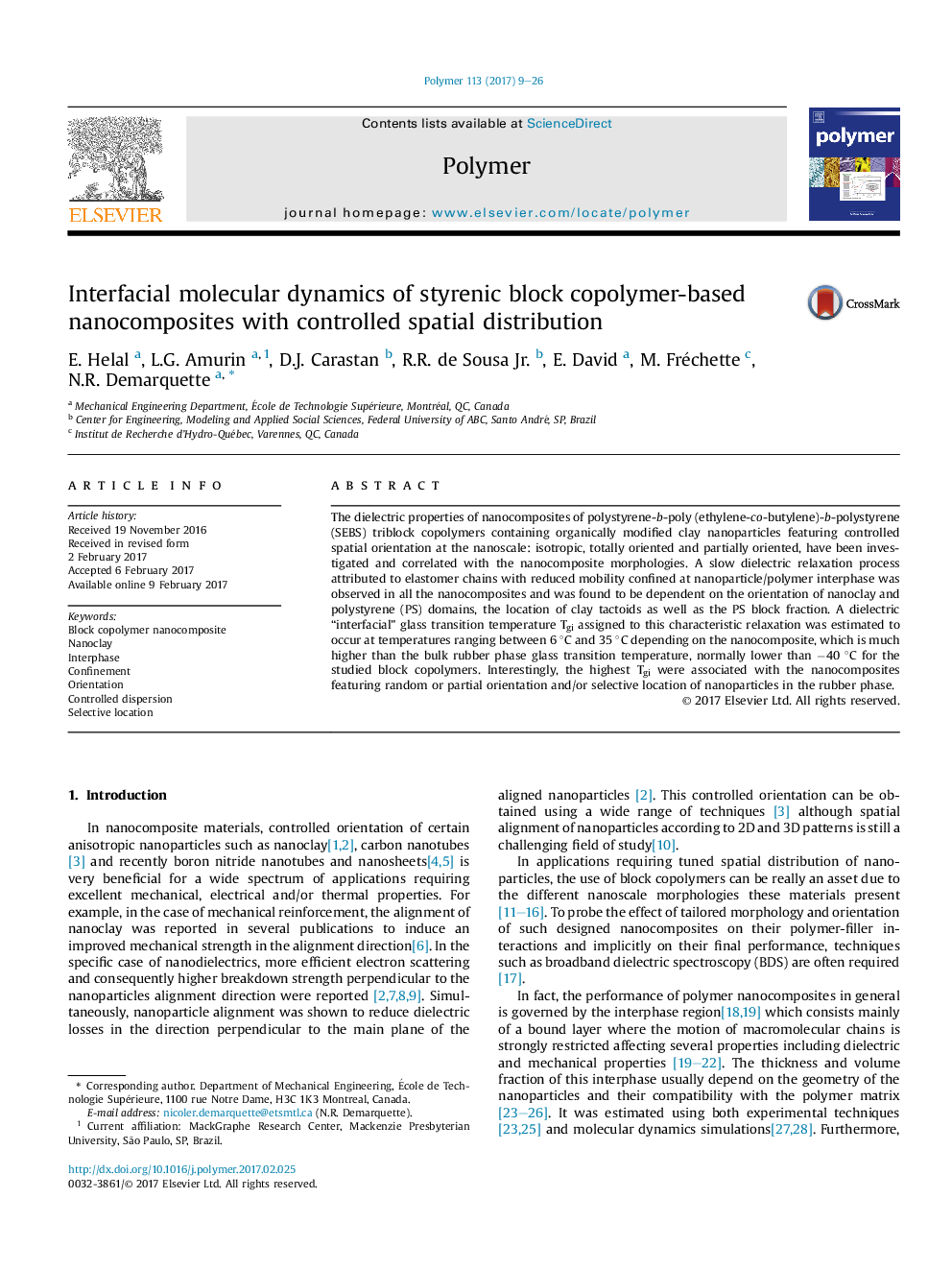| Article ID | Journal | Published Year | Pages | File Type |
|---|---|---|---|---|
| 5178074 | Polymer | 2017 | 18 Pages |
â¢Morphology of clay/thermoplastic elastomer can be tailored by processing.â¢Isotropic, totally oriented and partially oriented nanocomposites were obtained.â¢Identification of additional relaxation of rubber chains at clay/polymer interfaces.â¢New relaxation depends on the orientation of clay and copolymer nanodomains.â¢New relaxation corresponds to an interfacial layer of thickness around 7-10 nm.
The dielectric properties of nanocomposites of polystyrene-b-poly (ethylene-co-butylene)-b-polystyrene (SEBS) triblock copolymers containing organically modified clay nanoparticles featuring controlled spatial orientation at the nanoscale: isotropic, totally oriented and partially oriented, have been investigated and correlated with the nanocomposite morphologies. A slow dielectric relaxation process attributed to elastomer chains with reduced mobility confined at nanoparticle/polymer interphase was observed in all the nanocomposites and was found to be dependent on the orientation of nanoclay and polystyrene (PS) domains, the location of clay tactoids as well as the PS block fraction. A dielectric “interfacial” glass transition temperature Tgi assigned to this characteristic relaxation was estimated to occur at temperatures ranging between 6 °C and 35 °C depending on the nanocomposite, which is much higher than the bulk rubber phase glass transition temperature, normally lower than â40 °C for the studied block copolymers. Interestingly, the highest Tgi were associated with the nanocomposites featuring random or partial orientation and/or selective location of nanoparticles in the rubber phase.
Graphical abstractDownload high-res image (226KB)Download full-size image
